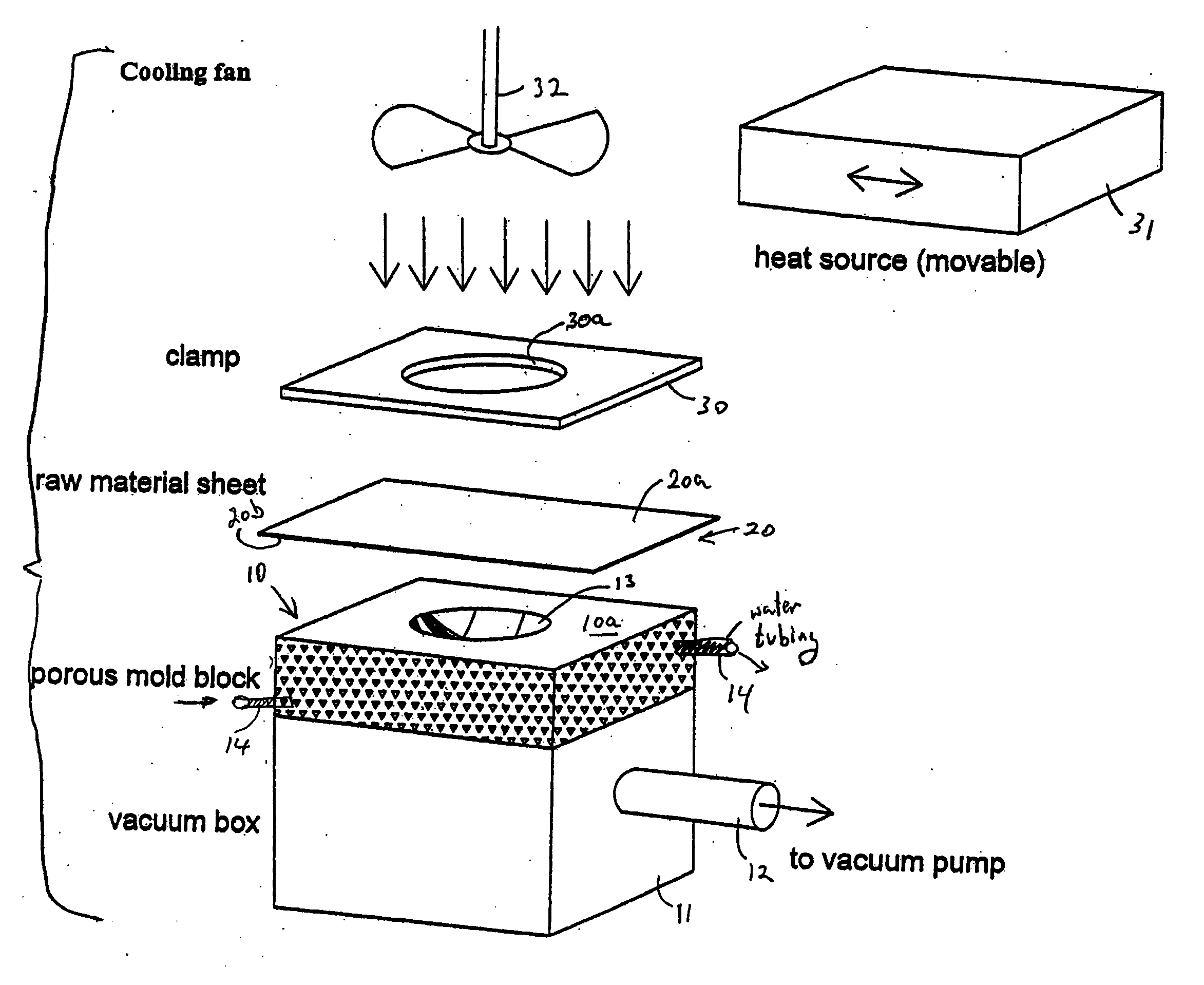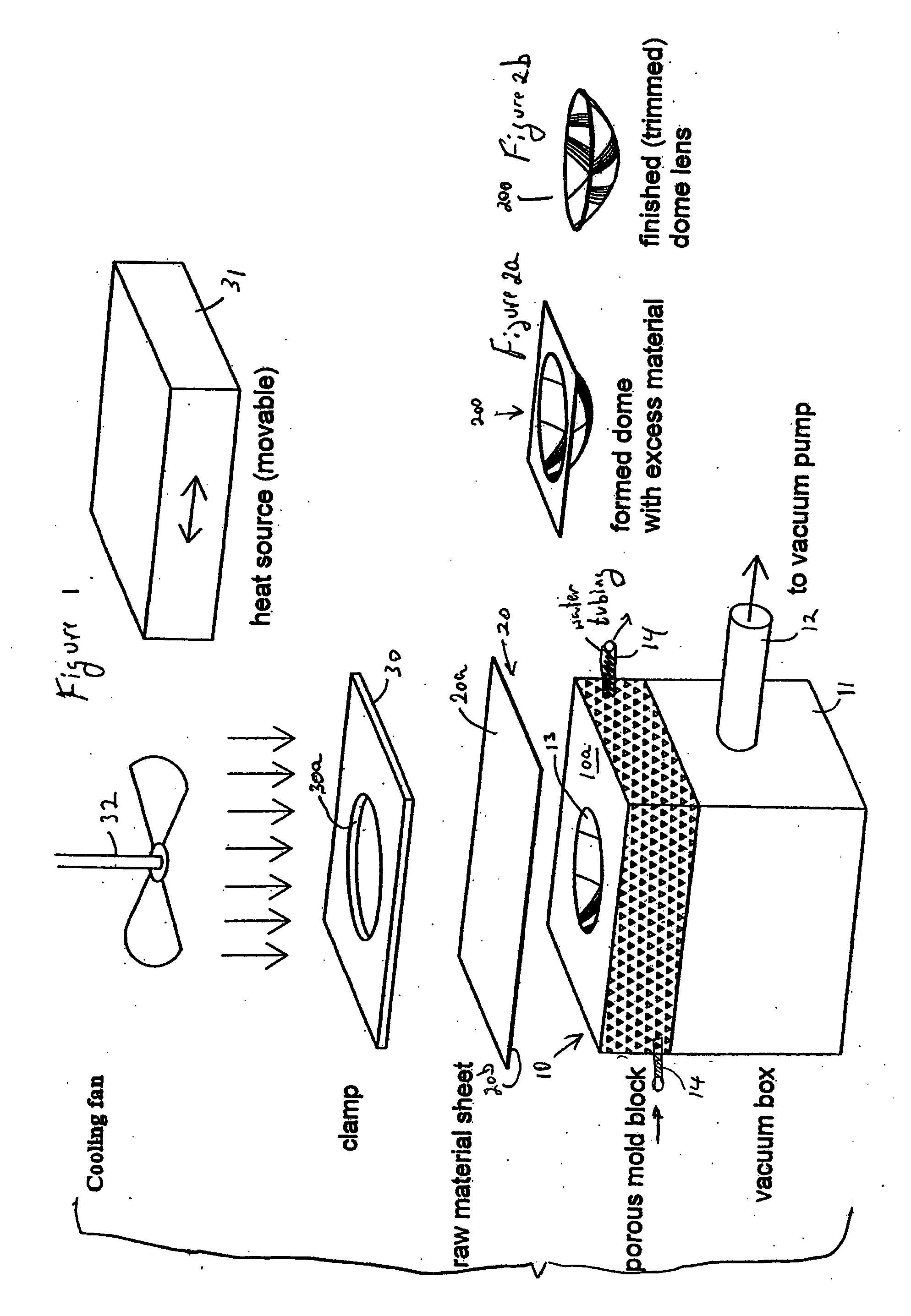Process for thermo-molding convex mirrors
a convex mirror and thermo-molding technology, applied in the field of convex mirror production, can solve the problems of dimensional distortion and general high cost of processes, and achieve the effect of dimensionally more accurate parts and low cos
- Summary
- Abstract
- Description
- Claims
- Application Information
AI Technical Summary
Benefits of technology
Problems solved by technology
Method used
Image
Examples
Embodiment Construction
[0009] Generally the present invention comprises a manufacturing process for producing arbitrary pre-determined three-dimensional shapes from plastic sheets, while preserving the integrity of the sheets. The finished products can have optical integrity which makes them suitable for mirrors, reflectors, signs, camera domes, and other optically sensitive applications. The shapes may be pre-selected by using three dimensional CAD software, and they can be manufactured using this process. Furthermore, since the process is based on thermally molding parts starting from an initially flat sheet, the tooling is much lower cost than would be the case if a person tried to injection mold a similar part. The overall steps in this process generally include:
[0010] 1. Construction / design of molding tooling.
[0011] 2. Selection of raw materials for the plastic stock
[0012] 3. Heating, shaping, and cooling the part
[0013] Finishing the Part
[0014] More specifically the process of forming an optical...
PUM
| Property | Measurement | Unit |
|---|---|---|
| diameter | aaaaa | aaaaa |
| temperature | aaaaa | aaaaa |
| temperature | aaaaa | aaaaa |
Abstract
Description
Claims
Application Information
 Login to View More
Login to View More - R&D
- Intellectual Property
- Life Sciences
- Materials
- Tech Scout
- Unparalleled Data Quality
- Higher Quality Content
- 60% Fewer Hallucinations
Browse by: Latest US Patents, China's latest patents, Technical Efficacy Thesaurus, Application Domain, Technology Topic, Popular Technical Reports.
© 2025 PatSnap. All rights reserved.Legal|Privacy policy|Modern Slavery Act Transparency Statement|Sitemap|About US| Contact US: help@patsnap.com


